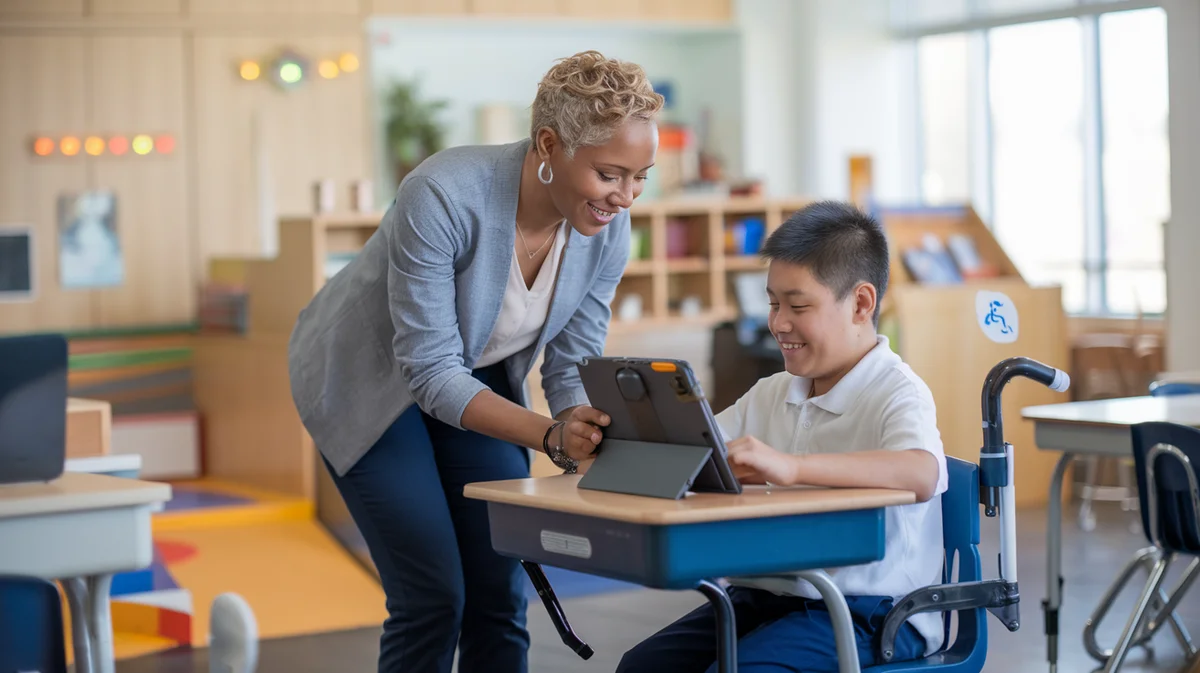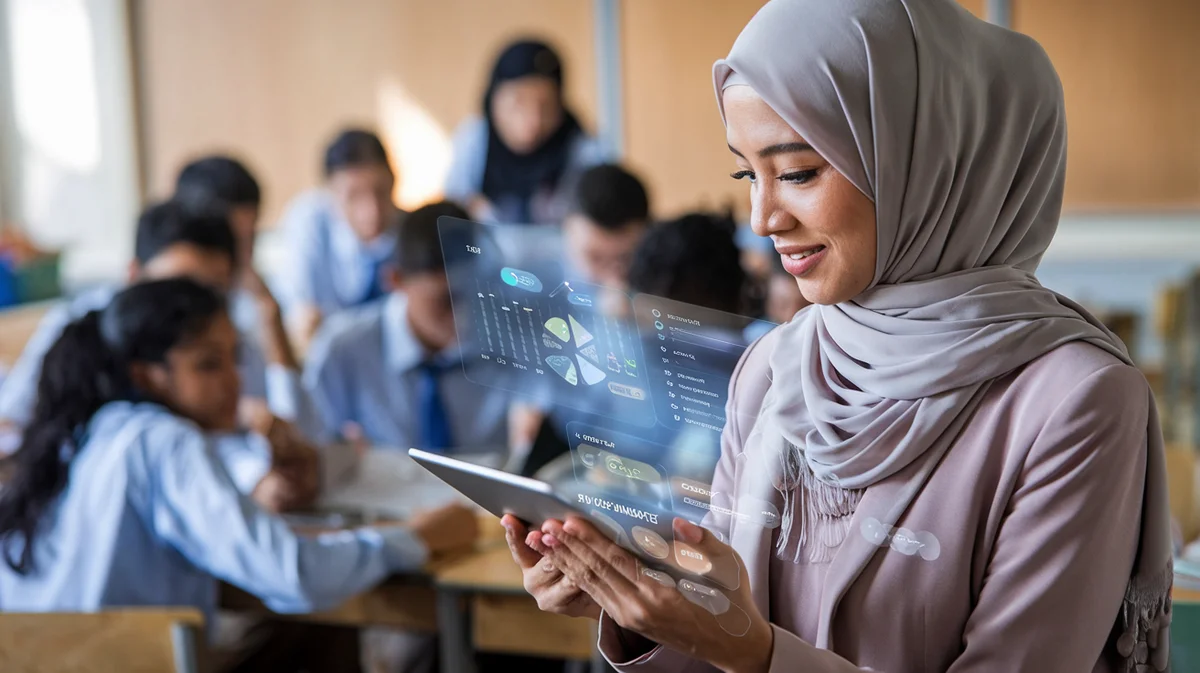Accessibility in Inclusive Education


wp:paragraph
Inclusive education accessibility is not just a policy goal — it's a transformative movement shaping the future of learning worldwide. At UNOWA, we are committed to empowering institutions, educators, and students by designing and delivering complete educational systems that champion inclusivity, adaptability, and innovation. Drawing from over 15 years of experience and insights from global reform projects, we explore the current landscape, challenges, and proven strategies for making education accessible to all.
/wp:paragraph
wp:heading {"level":2}
The Global Imperative for Inclusive Education Accessibility
/wp:heading
wp:paragraph
Across the EU, MENA, and CIS regions, the drive for inclusive education accessibility is guided by powerful international frameworks. The UN Convention on the Rights of Persons with Disabilities (UNCRPD) and Sustainable Development Goal 4 (SDG4) both emphasize the right of every learner to access quality education, regardless of ability or background. These frameworks have inspired significant legislative and policy changes, particularly in Europe and Central Asia.
/wp:paragraph
wp:paragraph
Key Progress:
/wp:paragraph
wp:list
- In Central and Eastern Europe, the Caucasus, and Central Asia, out-of-school rates have halved over the past 20 years.
- The proportion of children with disabilities in special schools dropped from 78% in 2005/06 to 53% in 2015/16.
- Residential institution placements for children with disabilities fell by 30% in the same period.
/wp:list
wp:paragraph
Despite these advances, challenges persist. For example, one in three students with special needs in Central and Eastern Europe is still placed in special schools, and in countries like Georgia and Kyrgyzstan, youth with disabilities are twice as likely to be out of school compared to their peers.
/wp:paragraph
wp:heading {"level":2}
Legal Frameworks and Policy Evolution
/wp:heading
wp:heading {"level":3}
International and National Commitments
/wp:heading
wp:paragraph
The shift toward inclusive education accessibility is underpinned by robust legal frameworks:
/wp:paragraph
wp:list
- UNCRPD: Mandates equal access to education for persons with disabilities.
- SDG4: Calls for inclusive and equitable quality education for all.
/wp:list
wp:paragraph
At the national level, progress is evident:
/wp:paragraph
wp:list
- Two out of ten European countries assessed (Finland and France) have legislation rated as "fully supportive" of inclusive education.
- Two-thirds of education systems now define inclusion to embrace multiple marginalized groups, not just those with disabilities.
/wp:list
wp:paragraph
However, a critical gap remains: legislative changes often outpace the allocation of resources needed for effective implementation.
/wp:paragraph
wp:heading {"level":2}
Proven Strategies for Inclusive Education Accessibility
/wp:heading
wp:heading {"level":3}
1. Comprehensive Support Systems
/wp:heading
wp:paragraph
Effective inclusive education relies on a network of support services:
/wp:paragraph
wp:list
- 23 out of 30 European education systems offer counseling and mentoring.
- 22 provide learning assistance.
- 21 offer specialist and therapist support.
/wp:list
wp:paragraph
These services are essential for addressing the diverse needs of learners and ensuring that inclusion is not just a policy, but a lived reality in classrooms.
/wp:paragraph
wp:heading {"level":3}
2. Shifting Paradigms: From Medical to Rights-Based Models
/wp:heading
wp:paragraph
There is a growing move away from the medical model of disability — which focuses on deficits — toward a rights-based approach that values diversity and empowers all learners. This shift is crucial for dismantling barriers and fostering environments where every student can thrive.
/wp:paragraph
wp:heading {"level":3}
3. Curriculum Adaptation and Technology Integration
/wp:heading
wp:paragraph
At UNOWA, we recognize that curriculum adaptation and technology are key to unlocking inclusive education accessibility. Our solutions, such as MIKKO for inclusive education and Ulabs for STEM innovation, are designed to be adaptable to national standards and responsive to local needs.
/wp:paragraph
wp:paragraph
Best Practices:
/wp:paragraph
wp:list
- Flexible curricula that accommodate different learning styles and abilities.
- Digital content and assistive technologies that bridge gaps for students with special educational needs (SEN).
- Analytics-driven insights to monitor progress and inform targeted interventions.
/wp:list
wp:heading {"level":3}
4. Teacher Training and Professional Development
/wp:heading
wp:paragraph
Empowering educators is at the heart of successful inclusion. We provide comprehensive training programs that equip teachers with the skills and confidence to adapt instruction, use assistive technologies, and foster inclusive classroom cultures.
/wp:paragraph
wp:paragraph
Expert Insight: “Teachers are the linchpin of inclusive education. Ongoing professional development and peer support are essential for sustaining inclusive practices at scale.” — European Agency for Special Needs and Inclusive Education
/wp:paragraph
wp:heading {"level":3}
5. Data-Driven Decision Making
/wp:heading
wp:paragraph
Robust data collection and analysis, such as the European Agency Statistics on Inclusive Education (EASIE), enable policymakers and institutions to identify gaps, allocate resources effectively, and measure the impact of inclusion initiatives.
/wp:paragraph
wp:heading {"level":2}
Challenges and Opportunities
/wp:heading
wp:heading {"level":3}
Bridging the Policy-Implementation Gap
/wp:heading
wp:paragraph
A recurring challenge is the disconnect between supportive legislation and the resources allocated for implementation. Laws alone are not enough — schools need funding, trained staff, adapted materials, and ongoing support to make inclusion a reality.
/wp:paragraph
wp:heading {"level":3}
Local Adaptation for Global Impact
/wp:heading
wp:paragraph
Inclusive education accessibility must be tailored to local contexts. In the MENA region, for example, rapid economic development is driving investment in modern education tools, while in the CIS, reforms focus on deinstitutionalization and community-based support.
/wp:paragraph
wp:paragraph
Case Example: In Kazakhstan, national reforms have prioritized inclusive education, resulting in increased enrollment of children with disabilities in mainstream schools and the development of specialized teacher training programs.
/wp:paragraph
wp:heading {"level":2}
The Role of UNOWA in Advancing Inclusive Education Accessibility
/wp:heading
wp:paragraph
Our mission is to transform learning experiences and create a better world through modern education tools. We work closely with ministries of education, curriculum authorities, and institutional partners to deliver scalable, adaptable solutions that drive real change.
/wp:paragraph
wp:paragraph
Our Value Proposition:
/wp:paragraph
wp:list
- Complete educational systems, from content to analytics, designed for inclusivity.
- Locally adaptable solutions aligned with national standards.
- Proven track record with over 300 national projects delivered.
- Dedicated support for schools, kindergartens, and special education centers.
/wp:list
wp:paragraph
Learn more about our approach at UNOWA.
/wp:paragraph
wp:heading {"level":2}
External Resources
/wp:heading
wp:list
- UN Convention on the Rights of Persons with Disabilities (UNCRPD)
- Sustainable Development Goal 4 (SDG4)
- European Agency for Special Needs and Inclusive Education
- UNESCO Inclusive Education
/wp:list
wp:heading {"level":2}
Frequently Asked Questions
/wp:heading
wp:heading {"level":3}
What is inclusive education accessibility?
/wp:heading
wp:paragraph
Inclusive education accessibility refers to the removal of barriers — physical, digital, curricular, and attitudinal — that prevent learners with diverse needs from participating fully in educational settings. It ensures that every student, regardless of ability, can access and benefit from quality education.
/wp:paragraph
wp:heading {"level":3}
Why is inclusive education important?
/wp:heading
wp:paragraph
Inclusive education fosters equity, social cohesion, and better learning outcomes for all students. It prepares societies to value diversity and empowers individuals to reach their full potential.
/wp:paragraph
wp:heading {"level":3}
What are the main challenges in implementing inclusive education?
/wp:heading
wp:paragraph
Key challenges include insufficient funding, lack of trained educators, inadequate infrastructure, and societal attitudes. Bridging the gap between policy and practice requires coordinated efforts and sustained investment.
/wp:paragraph
wp:heading {"level":3}
How does technology support inclusive education accessibility?
/wp:heading
wp:paragraph
Technology enables personalized learning, provides assistive tools for students with disabilities, and facilitates data-driven decision-making. Digital platforms and adaptive content are essential for scaling inclusion.
/wp:paragraph
wp:heading {"level":3}
How can institutions get started with inclusive education reforms?
/wp:heading
wp:paragraph
Begin by assessing current policies and practices, investing in teacher training, adapting curricula, and leveraging technology. Partnering with experienced providers like UNOWA can accelerate progress and ensure sustainable impact.
/wp:paragraph
wp:paragraph
Inclusive education accessibility is not just a goal — it's a shared responsibility. At UNOWA, we invite ministries, educators, and partners to join us in transforming learning experiences for a brighter, more inclusive future. Contact us to start your journey toward educational transformation.
/wp:paragraph








